Please share with your friends!
Storytelling for kids
“The dog ate the cake and got a tummy ache. Then the cat had milk and it was perfect.”
Those are the exact words that my three-year-old daughter, Annie, said when describing a scene with little figurines. Has your child ever made up a funny scenario with her toys or from seeing a picture?
A storytelling for kids activity, like picture story, is an engaging way to develop oral language. When I was a Montessori teacher in the classroom, we tried four ways to practice storytelling:
- Tell a story about what they see in a photo or picture.
- Explain what’s in their drawings and artwork.
- Retell a story from a book with objects, or act it out.
- Make up their own story with objects or figures collected in a basket.
How do you introduce storytelling to young children? How do you incorporate written language with storytelling, even if they’re not writing or reading yet? Why is this important for language development?
In this post, I’ll share with you the Picture Story Dictation lesson I learned from my Montessori training. I’ll also talk about the four variations we did in the classroom and how it went with my daughter at home!
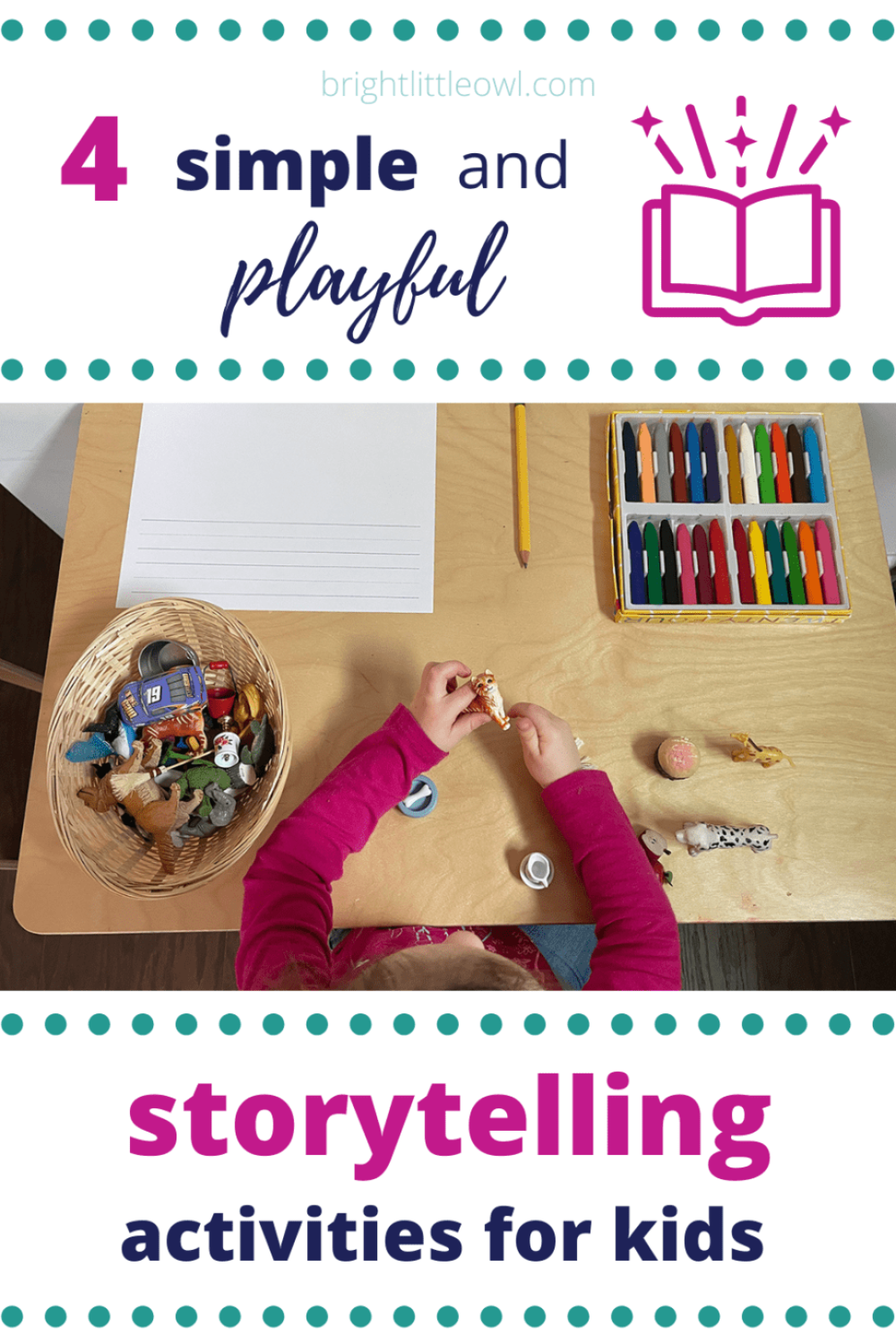
In This Post
Why are storytelling activities important for young children?
Storytelling activities are wonderful for language development in young children.
Sometimes young children can be overwhelmed with all of the letters, handwriting practice, and phonics. It’s similar to how a new student of music spends hours and hours learning to read music and practicing scales when they just want to start playing the melody.
While the letters and phonics of language are important, it can be repetitive and feel like a chore to a young child. Storytelling activities allow for a child to explore language in a playful and exciting way without the pressure of academic work.
It sets the stage for the love of language, books, writing and reading. Also, storytelling activities are beneficial because it can help develop:
- self-expression
- creativity
- confidence
- communication skills
- concentration
What is dictation?
The storytelling activity, picture story, also includes dictation. Dictation is when your child tells a story and you write it down on paper. By doing this, you’re modeling:
- handwriting
- punctuation
- capitalization
- spelling
- grammar
- good posture
This is great for young children who are not writing or reading yet because they are observing the importance of the written word, and how it is connected to the spoken word.
Your child learns that when we write words it becomes special and exciting! It also shows that those letters they have been learning work together to create words. This sets up your child for success when the time comes for writing and reading.
The 4 Storytelling Activities
1. Picture story with photos
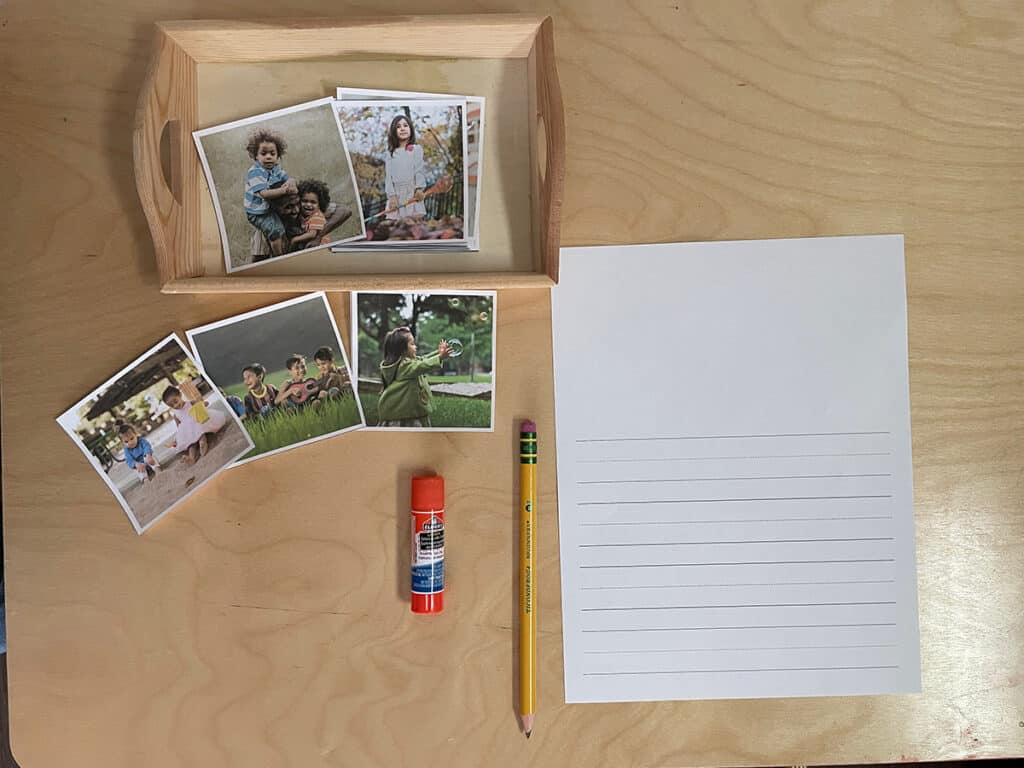
This is the lesson from my Montessori training. I talked about this in a previous post, Storybook Journal For Preschoolers: A Super Easy Way To Connect Spoken To Written Language.
In this post I suggest creating a journal of all of your child’s stories. But I go into great detail about how to do this lesson with your child. Check out that post to learn more!
You will need:
- Paper. You could use blank paper or lined paper.
- Pencil.
- Glue stick.
- Photos. You can find pictures from old catalogs, magazines, or print pictures found online.
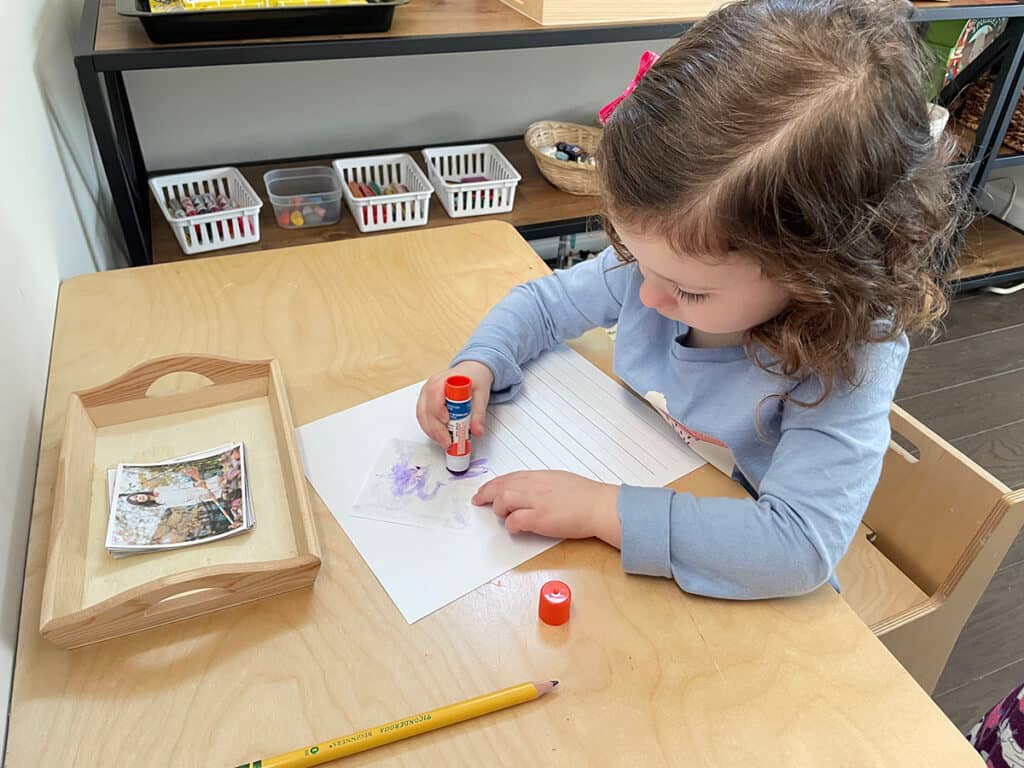
First, ask your child to choose a photo. Open the glue stick and glue the photo to the top of the paper.
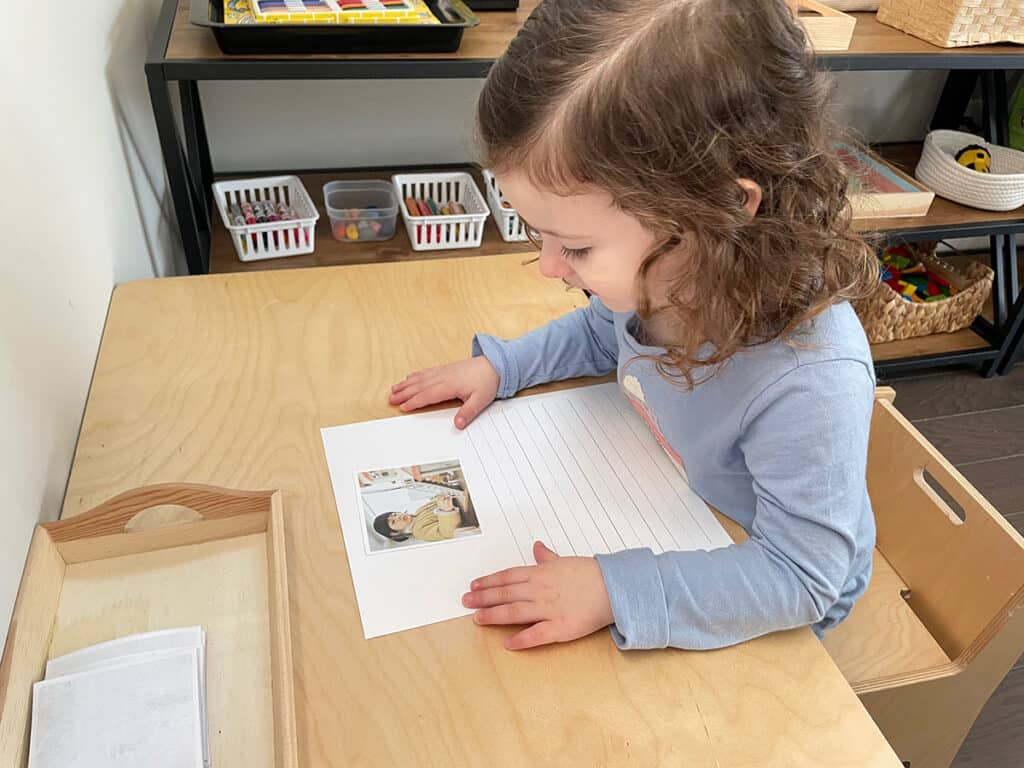
Ask your child to tell a story about what she sees in the picture. Talk about the picture and give prompts if she needs help. Encourage her to say phrases, instead of single words. Paraphrase for your child.
You will write down what your child says on the paper, modeling good posture, handwriting, grammar and punctuation. Read the story back to your child.
Annie really liked this activity. Her favorite part was looking through all the photos and choosing one. She could talk forever about what she saw in the picture. She was so excited about it! I paraphrased what she told me because she had so much to say!
You could continue writing on the back or on another piece of paper, if you’d like.
2. Draw a picture and tell a story
This is a variation of the first activity, Picture Story, with the same benefits. You could write the story on your child’s artwork, or on separate paper. It’s up to you.
Telling a story about your artwork was probably the most popular activity when I was a Montessori teacher! The kids would paint or draw at the easel or at the art table and bring their picture to me to tell me their story.
This was big with the four and five-year-olds. Many of the three-year olds loved to do this, too, but they would usually want to just label things in their picture. As they practiced more, they would be able to tell a story in complete sentences.
Annie is just starting to draw pictures. She drew this picture and told me what each thing was in her picture. She also told me what was happening in her picture. I labeled the pictures in her drawing. I also wrote down her story on lined paper, paraphrasing what she said.
She loves dogs, and was so excited to talk about her picture!
3. Retell a story with objects that go with a book
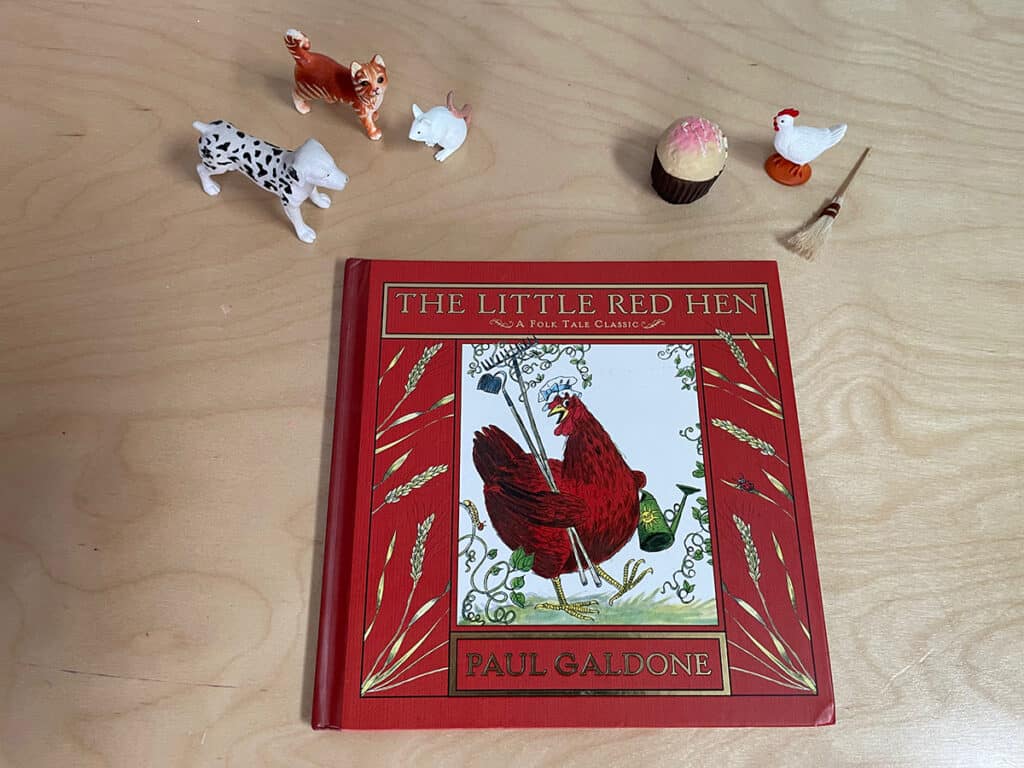
If your child is not ready to draw a picture or tell their own story yet, you can try retelling a story from a book.
When I was a Montessori teacher, we used to do a Theater activity with the whole group of kids. We would read a new story together, get to know the story really well, and play different parts of the story like actors in a play. We had simple props and costumes from things we found around the classroom.
One of the books we read for our Theater activity was The Little Red Hen. The kids had so much fun playing the parts of the dog, the cat, the mouse, and the little red hen.
Theater for young children is really great for learning storytelling skills and language but also great for building:
- self-confidence
- self-esteem
- listening skills
- cooperation
- creativity
If you’re working with a group of kids, doing a theater activity is wonderful. But if you’re just working with your child at home, you could try storytelling with objects that go with a book. The objects play different roles in the book.
When I tried this with Annie her whole face lit up with excitement! First, I read the book while holding the objects, making different voices like I was putting on a puppet show with them. Then I let Annie have a turn to play with the objects and tell the story.
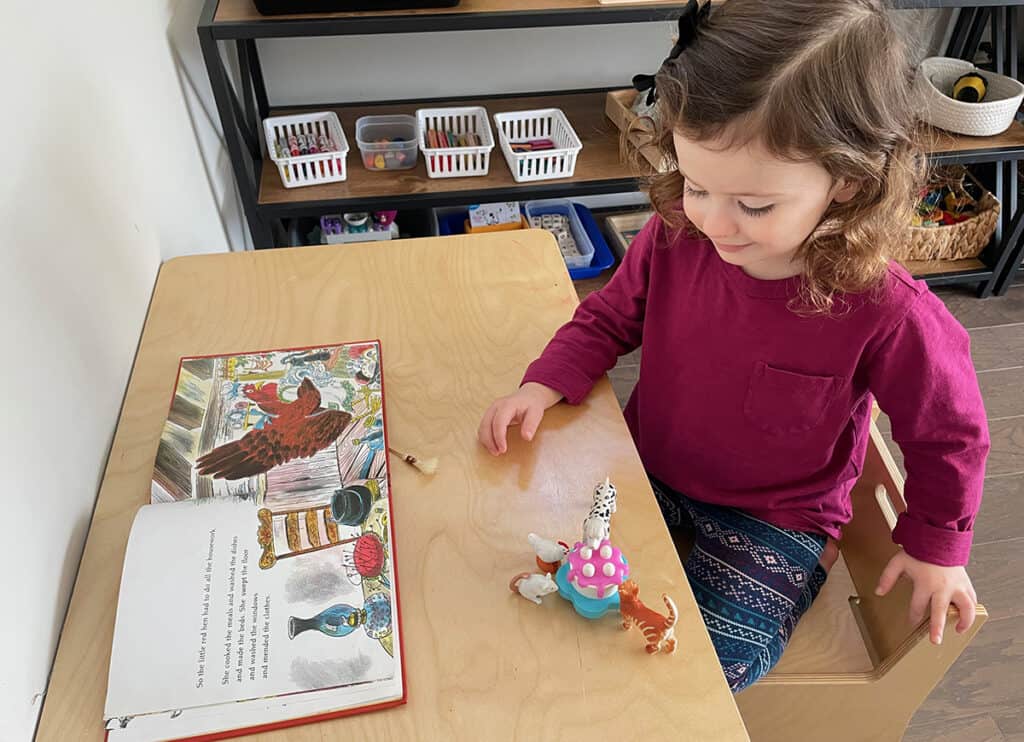
After doing this activity with Annie, she had a better understanding of telling a story. Next, we tried the storytelling basket with objects: she chose her objects, told her own story, and drew a picture of her story.
4. Storytelling basket with objects
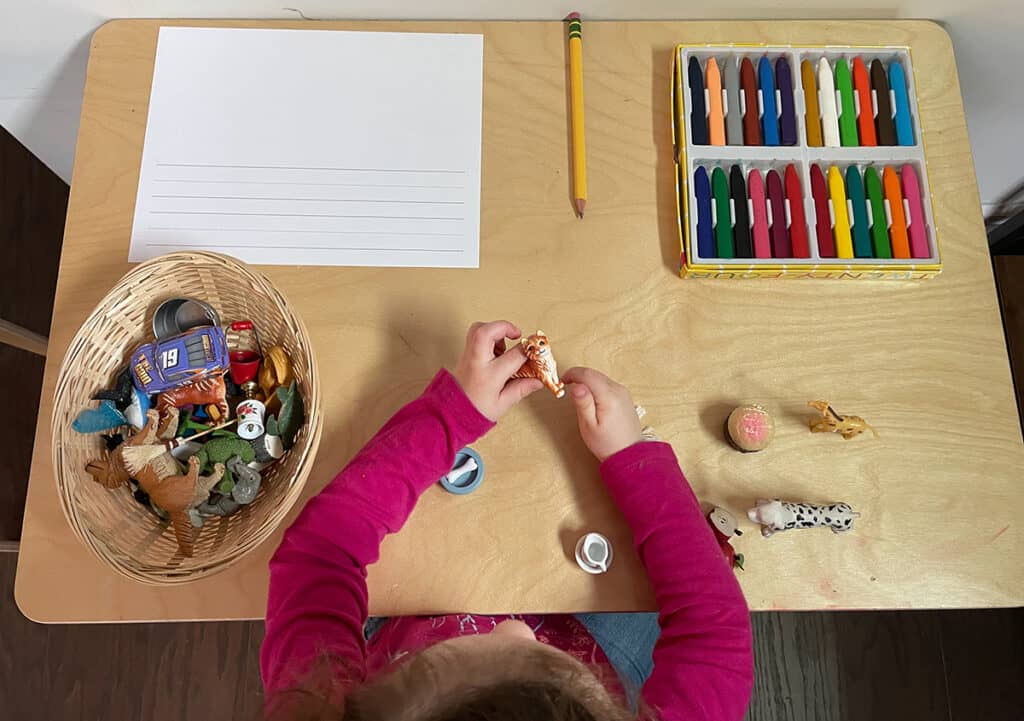
This is another really fun variation of Picture Story. This time, your child is making up her own story with objects. You can collect any objects, figures, or small toys you have around the house. Choose your child’s favorite things.
When we gathered objects for this activity, I had Annie go through them first, so that she could choose her favorites. You want the activity to be inviting for your child.
I also made sure that we had a variety of small objects. You can use things from a dollhouse, legos, or other toy sets:
- animals
- dolls, people
- cars, vehicles
- foods
- fruits, vegetables
- flowers, plants
- household objects (broom, mop, cup, bowl, chair, bucket)
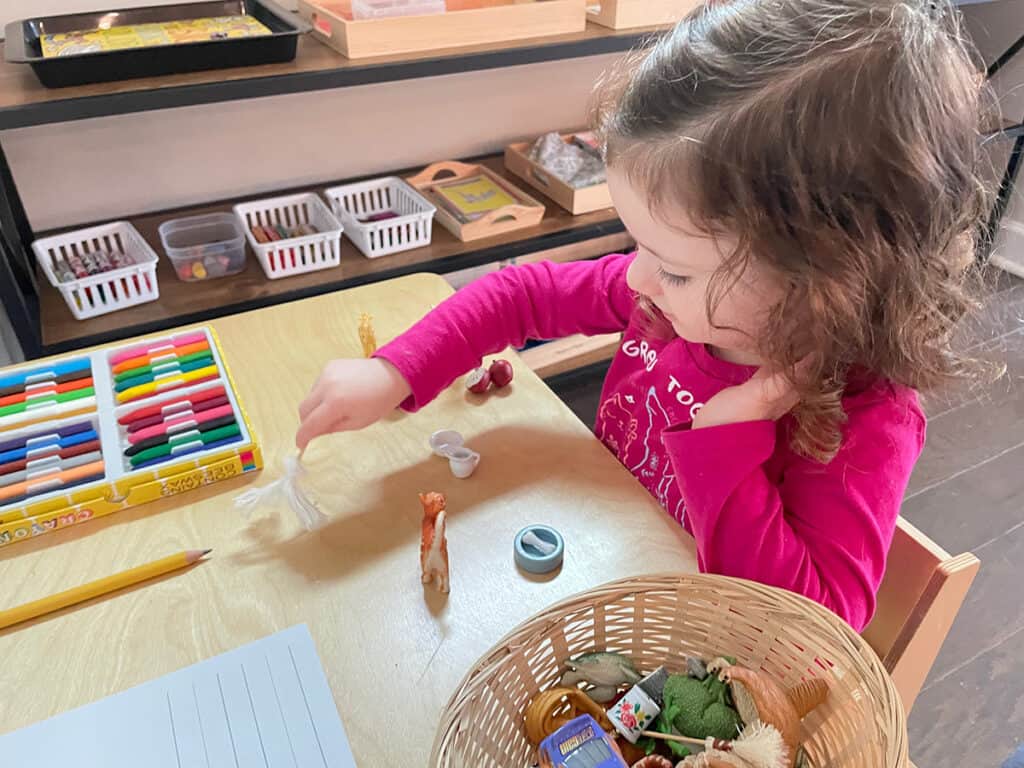
Ask your child to pick about 5 or 6 objects that she would like to use to make up a story. She may choose more or less, and that’s okay.
Ask her to tell a story about her objects. You can help her to talk about the objects and what they do or what they could do together.
For example, Annie picked up the dog, a bowl and a mop. I asked what was in the bowl? Milk. Why does the dog need a mop? Because he spilled the milk. Then the story began!
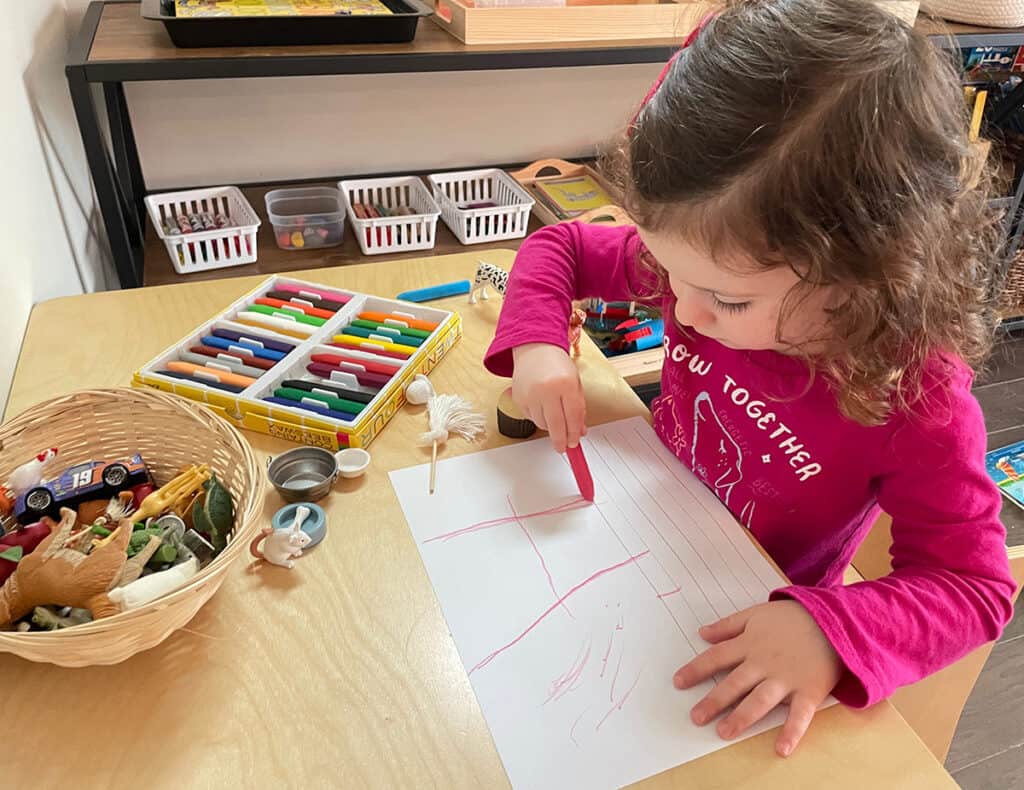
Next, ask your child to draw a picture of her story. If your child’s not ready to draw a picture yet, that’s okay. You can skip this step and revisit drawing a picture at a future time. You could also go back to the third activity above, retelling a story from a book with objects.
After your child draws a picture of her story, you can talk about the story and talk about her picture and what is in it.
Then, write down your child’s story. Annie pointed out all of the things in her picture and I labeled them for her first.
Then she talked about her story again and I paraphrased what she said as I wrote it down. Annie was very interested in the writing of the words and carefully watched me complete it.
Annie had a lot of fun with this one! I placed the basket of objects on the shelf near the art materials, so that she could take it out on her own to play with. Most of all, she loves to retell the story of The Little Red Hen!
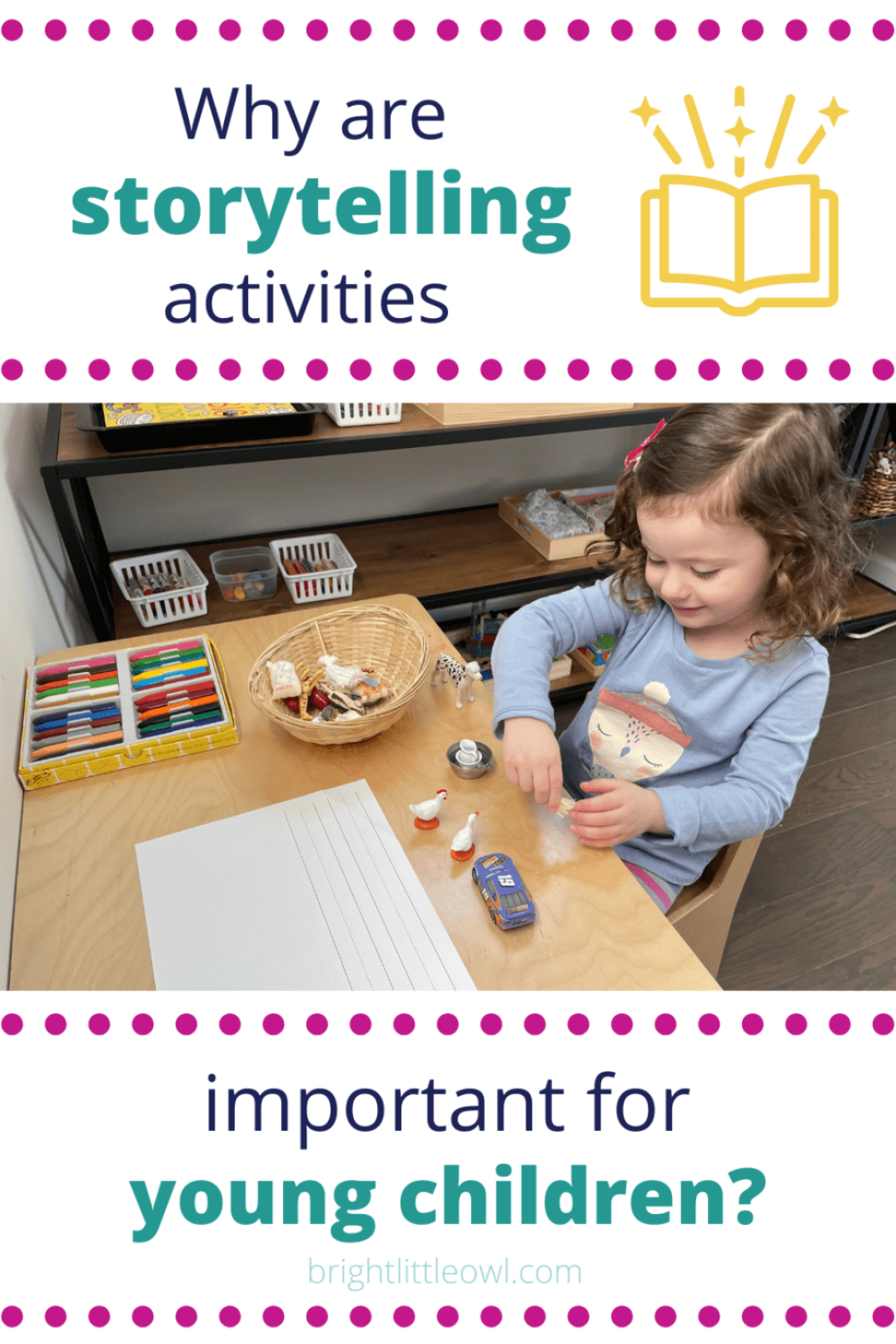
Concluding thoughts about storytelling
I hope these four storytelling activities are helpful to you in coming up with ideas for your child. I found that these activities were a big hit with Annie because she chose objects that she loved. She has been into dogs lately which helped with her enthusiasm for this work.
Not every child will be interested in drawing pictures yet, but you can still try different things with books, toys and other things you have around the house to practice storytelling. You could even use play dough or clay to make your own characters or scenes. You could also make puppets to tell a story.
What I love the most about these activities is that you can get started with your child even before she is writing or reading. The language development benefits are awesome!
Have you tried storytelling with your kids? What have they been into lately and could you encourage them to tell a story about it? Leave a comment, below!
More Montessori resources
If you liked this post, you’ll also like:
- Storybook Journal for Preschoolers: A Super Easy Way to Connect Spoken and Written Language
- The Essential Guide To 11 Fun Oral Language Development Activities
- Our 8 Favorite Poetry For Children Books That Make Us Happy
- Try This Cute Recycled Owl Craft And Make A Rhyme Come Alive
- How To Encourage Print Awareness With 140 Super Simple Labels
- 1 Playful Pre-Reading Activity To Try Today (Classify Objects)
You can also download the lesson plans for:
- Lesson 1: Beginning Oral Language Activities
- Lesson 2: Picture Story (Dictation) Plus 24 photos and the lined paper we used!
I will be adding all of the lesson plans as I write additional blog posts about Oral Language.
You can download them all below, by signing up for the Resources Library.
Storytelling for kids
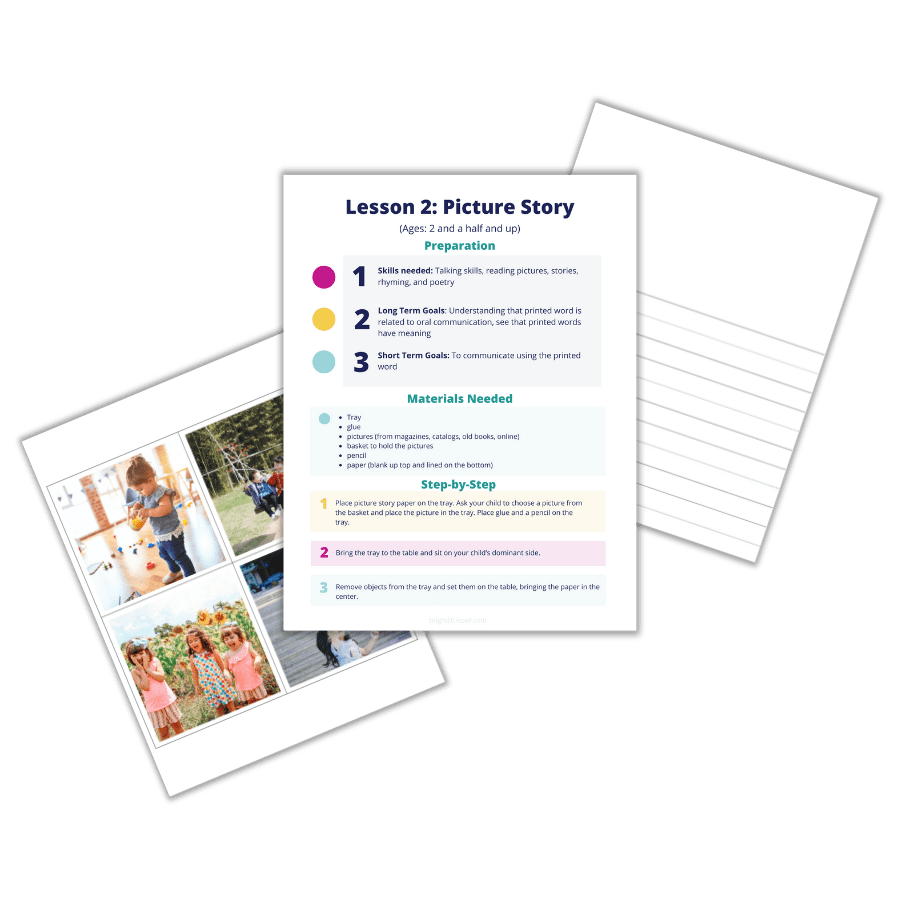

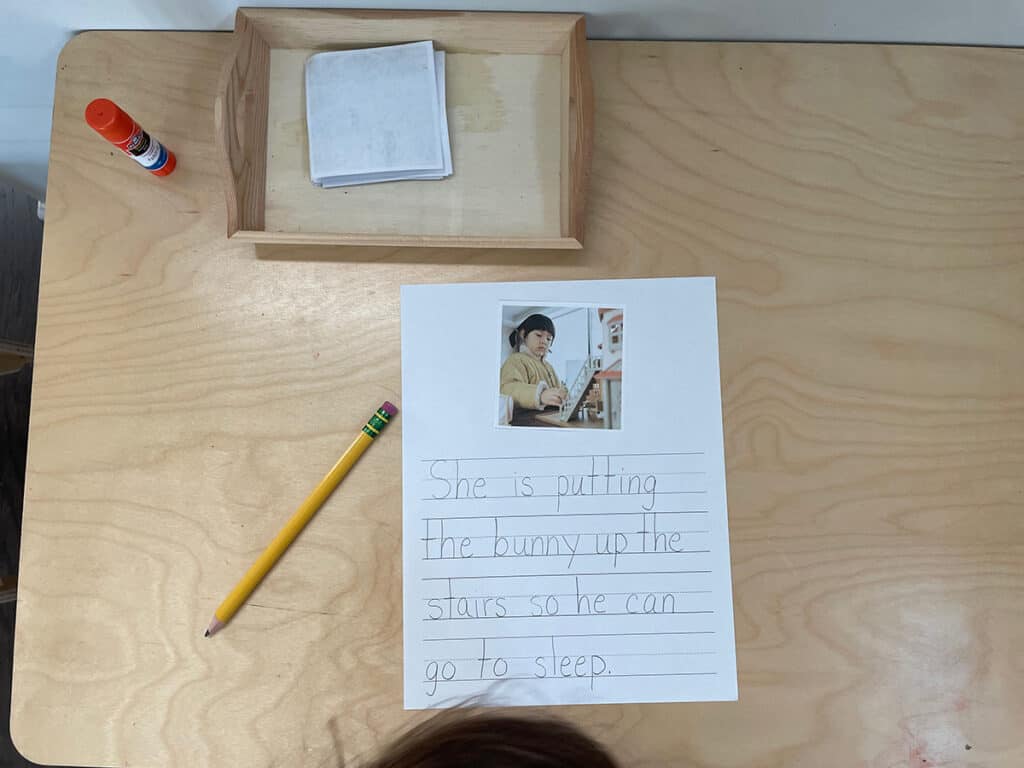
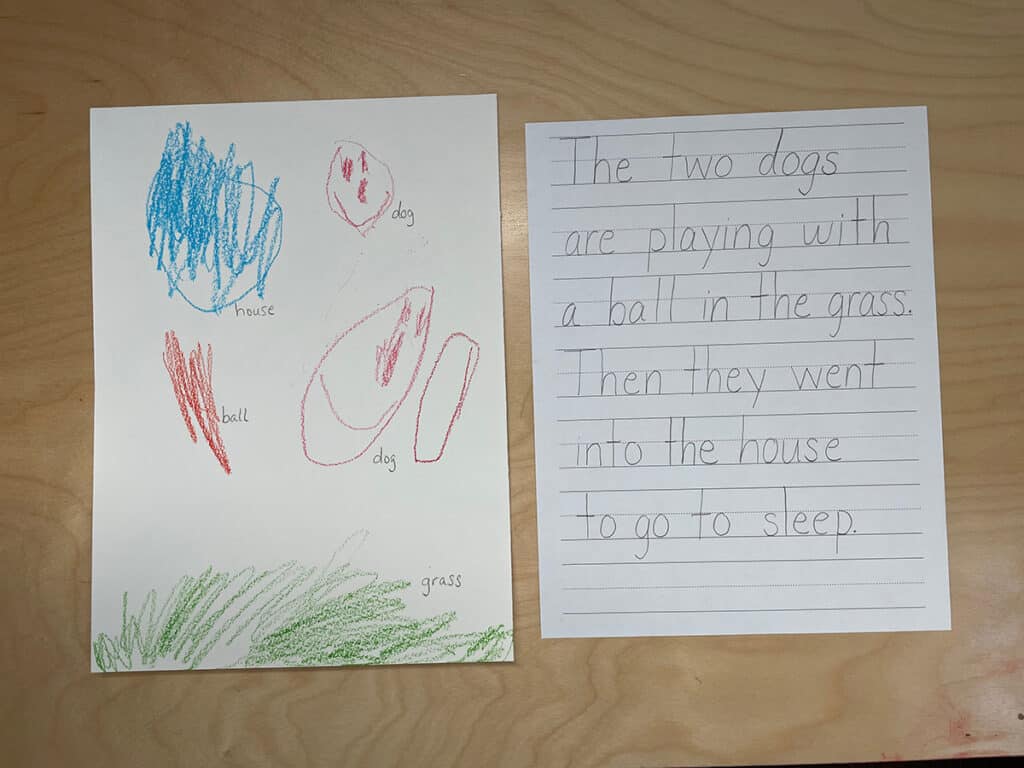
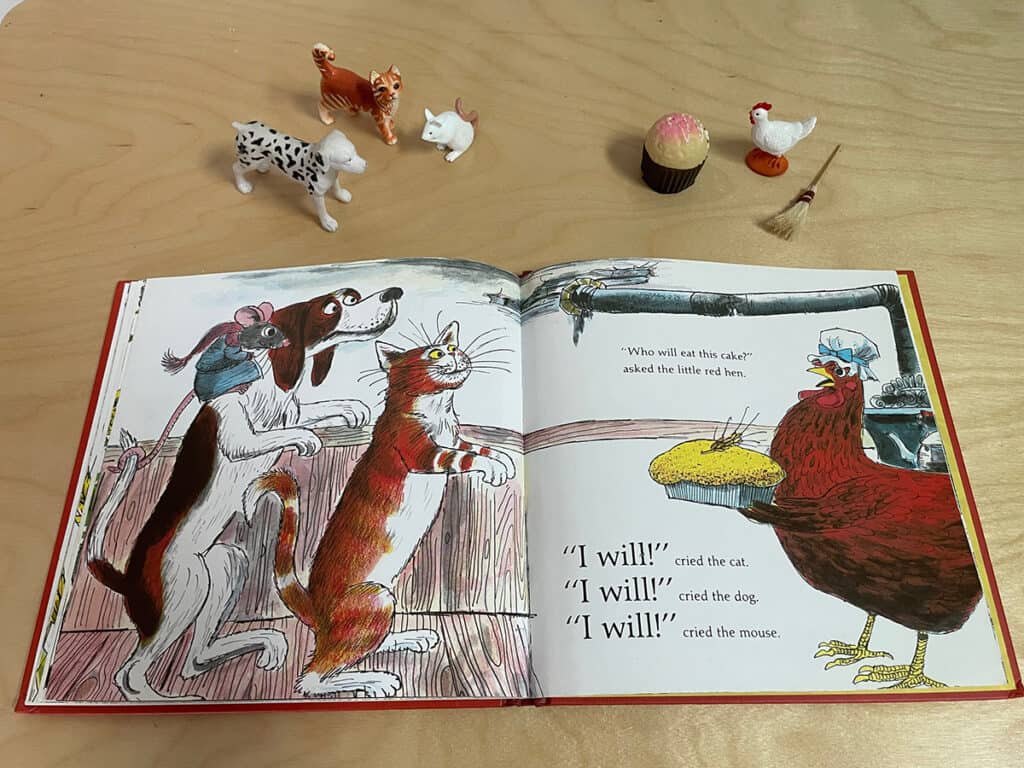
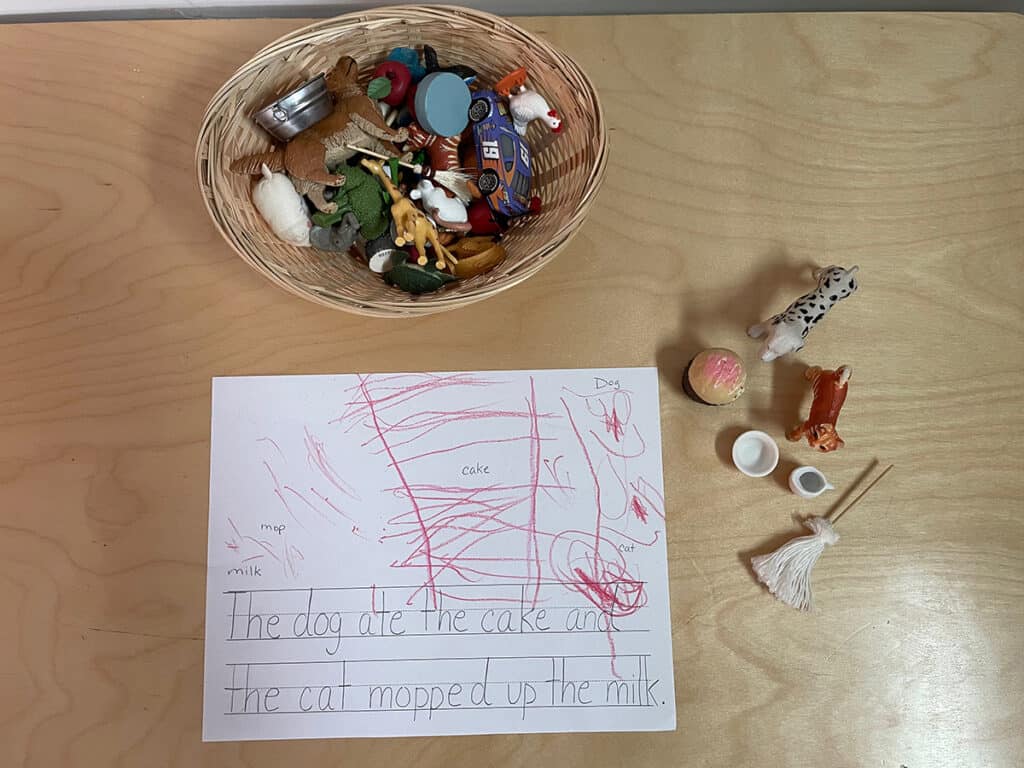
Useful information
Pingback: 30 Non-Traditional Preschool Reading Activities - Teaching Expertise
As a long time educator who specializes in reading and writing remediation, I love everything about this!
Montessori is one of the most wonderful ways to learn and teach! I come from a family of the Montessori method ….. my kids me my mother my grandmother!
And story telling helps in so many ways.
As a teacher I can say that storytelling is sooo important!
I’m a teacher and I think this is very useful for literacy development. Good ideas!
I like the idea of telling a story from a book with real life objects.
I love these ideas! I especially liked the storytelling basket. It’s such a simple activity with so many benefits!
I love this! We use dictation a lot to retain information. For my kids, when we read something I ask them to tell it back to me in story form! It’s a great exercise!
This was such a good read and with some wondering activities I think this would be great for not only my toddler but my little on in kindergarten as well!
These are the learning activities that help children comprehend what they are reading. It also helps with language development. I love it!
My son loves reading storybooks, but it would be great if he can create stories by himself with these materials! Such a great idea!
When the texts on the book is too long for my early reader, I retell the story on my own words using pictures too. Thanks for giving me so many options to tell a story.
We love doing storytelling activities at my house.
This is a great way to foster creativity. I love your little station for doing projects!
I love the activity using a photo to inspire a story. My kids would love doing this with picture of themselves. They’d have so much fun.
Love these ideas!
These are really great ideas.
Wow! I love all of this! Thank you for sharing. I will definitely be adding a story telling basket to our homeschool.
This is so important! Life gets busy and things like this get pushed aside. I love these ideas. My nieces and nephews have young children. I will share this with them.